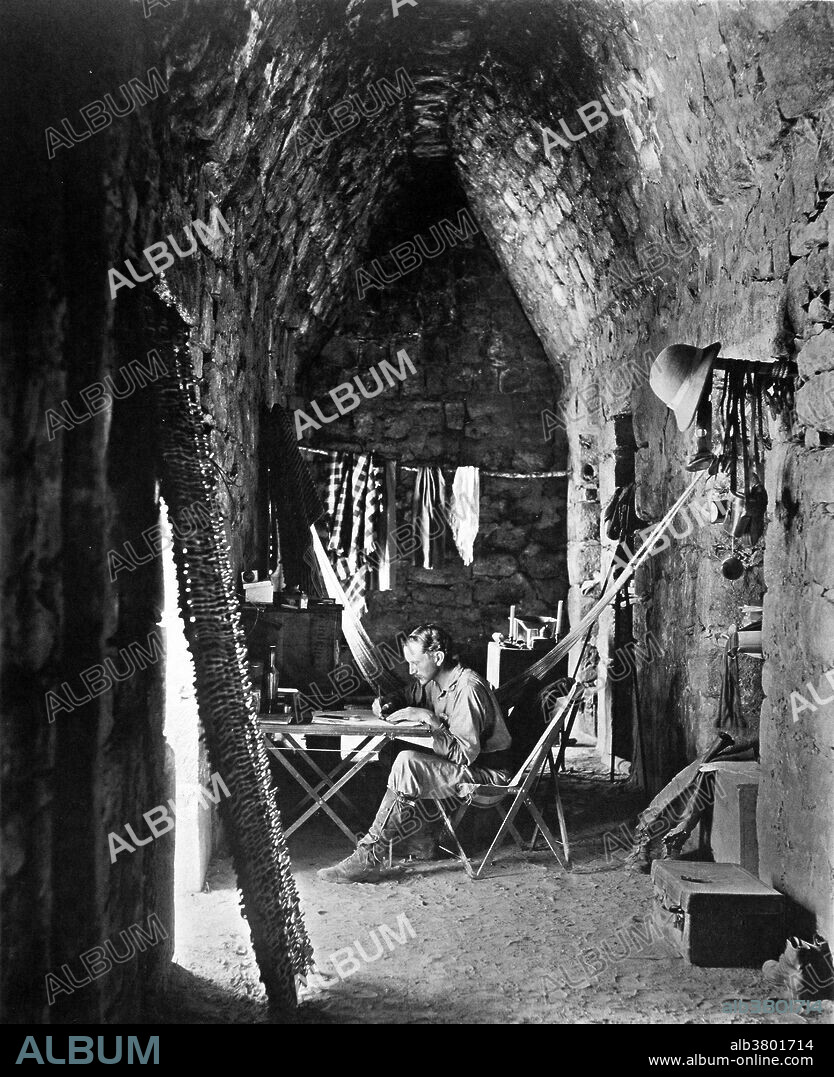alb3801714
Alfred Percival Maudslay, English Archeologist

|
Add to another lightbox |
|
Add to another lightbox |



Buy this image.
Select the use:

Title:
Alfred Percival Maudslay, English Archeologist
Caption:
Maudslay at Chichen Itza, 1899. Alfred Percival Maudslay (March 18, 1850 - January 22, 1931) was an English colonial diplomat, explorer and archeologist. In the 1880's he began the major archaeological work for which he is now best remembered. He started at the Mayan ruins of Quirigua and Copan where he hired laborers to help clear and survey the remaining structures and artifacts. He was then shown the newly found ruins in Tikaland, was the first to describe the site of Yaxchilán and Chichen Itza. He made six expeditions to Maya ruins and pioneered many of the later archeological techniques. After 13 years of preparation, he published his findings in 1902 as a 5 volume compendium entitled Biologia Centrali-Americana, which contained numerous drawings and photographs of Maya ruins, his commentary, and an appendix on archaic calendars by Joseph Thompson Goodman. He applied for permission to make a survey of Monte Albán in Oaxaca but when he finally received permission in 1902, he could no longer finance the work with his own money. He unsuccessfully applied for funding from the Carnegie Institution. He become a President of the Royal Anthropological Institute 1911-12. He died in 1931 at the age of 80. Materials he collected are currently stored at Harvard and the British Museum.
Category:
Science: Personalities
Credit:
Album / Science Source / New York Public Library
Releases:
Image size:
3450 x 4237 px | 41.8 MB
Print size:
29.2 x 35.9 cm | 11.5 x 14.1 in (300 dpi)
Keywords:
19TH CENTURY • 20 20TH XX XXTH TWENTIETH CENTURY • 20 XX TWENTIETH CENTURY • 20TH CENTURY • 20TH • ALFRED MAUDSLAY • ALFRED PERCIVAL MAUDSLAY • ARCHAEOLOGY • ARCHEOLOGICAL TECHNIQUES • ARCHEOLOGIST • ARCHEOLOGY • BIOLOGIA CENTRALI-AMERICANA • BW • CELEBRITIES • CELEBRITY • COLONIAL DIPLOMAT • DISCOVERER • ENGLISH • EUROPEA • EUROPEAN • EUROPEANS • EXPEDITION • EXPLORATION • EXPLORER • FAMOUS PEOPLE • FAMOUS • FIGURE • HISTORIC • HISTORICAL • HISTORY • IMPORTANT • MALE • MAN • MAUDSLAY • MAYA RUINS • MAYAN RUINS • MEN • NOTABLE • PEOPLE • PERSON • PERSONALITIES • PERSONALITY • PHOTO • PHOTOGRAPH • PHOTOGRAPHER • RESEARCHER (MALE) • RESEARCHER • RUIN • RUINS • SCIENCE AUTHOR • SCIENCE WRITER • SCIENCE • SCIENCE: PERSONALITIES • SIEGE • SITE • TWENTIETH CENTURY • WELL-KNOWN


 Pinterest
Pinterest Twitter
Twitter Facebook
Facebook Copy link
Copy link Email
Email
